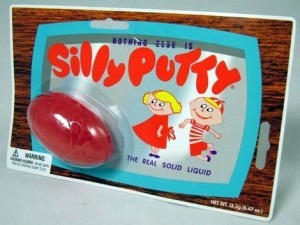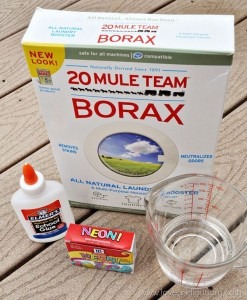Do you remember Silly Putty? That sort of rubbery compound that came in a plastic egg that you could roll into a ball and bounce or roll into the shape of worms or pretzels? If you were born after 1950 in America I am pretty confident you know what I am talking about since as of July 2009, twenty thousand eggs of Silly Putty are sold daily. Since 1950, more than 300 million eggs of Silly Putty have been sold.
But did you know Silly Putty was invented by accident? During World War II, Japan invaded rubber producing countries such as Thailand, Malaysia and the Philippines, cutting off supplies to the West. Rubber was vital for the production of rafts, tires, vehicle and aircraft parts, gas masks, and boots. U.S. citizens were strongly encouraged to make their rubber products last until the end of the war and to donate spare items that contained rubber. At the same time, the government funded research into synthetic rubber compounds to attempt to solve this shortage. Problem is, they never found a suitable solution.
Like every other kid, I would take my Silly Putty and press it against a news paper, particularly the comics section, and see the reversed impression left on the Silly Putty. I also discovered other neat things that would happen to it. For instance it would sort of melt if left out in the sun or if you put it in warm water it would also get more liquidy. (It that actually a word?)
In 1977 Binney & Smith, the makers of Crayola products, acquired the rights to Silly Putty. By 1987, annual Silly Putty sales exceeded two million eggs.
Silly Putty was inducted into the National Toy Hall of Fame in 2001.
Since Silly Putty was initially primarily targeted towards adults, I see no reason kids should have all the fun.
If you would like to have a go at making your own version of Silly Putty you can find the instructions here. You only need a few items which you may even have already just around the house.
Let us know how it worked out in the comments.
For a detailed history of Silly Putty, check out the article How Silly Putty Works at HowStuffWorks.com



